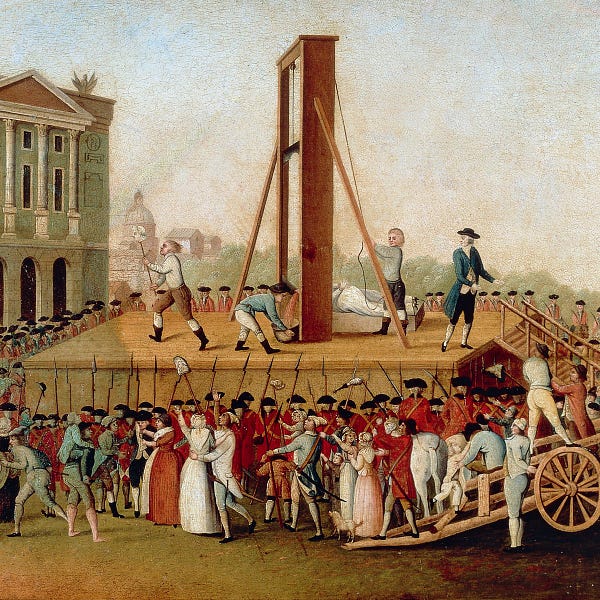Open virtual worlds, thus, consist of massively multiplayer gaming platforms with unstructured objectives, user-generated content, immersive 3D virtual reality shared environments, and social networking elements used between people through their avatars. - A Typology of Virtual Worlds: Historical Overview and Future Directions
The difference between a virtual world and a multiplayer game lies in the degree of how unstructured the objectives are, the reliance on user-generated content and the degree of freedom a player has inside the virtual environment.
In a completely “open virtual world” inhabitants rely on objects and experiences they create, have near infinite degrees of freedom and can work towards whatever objective they desire - reflecting reality. In fact, the persistent dream of virtual worlds has been to create an alternate universe where people could live out fantasy lives.
Those that have taken to heart this vision have pushed for further agency - going as far as to hand over the governance rights of the virtual environments they’d created to the people residing in it.
As governance system designers for the metaverse we should study the rich lineage of previous experiments of player-governed virtual spaces and learn how we can improve on these models with new technology (crypto).

LambdaMoo
MUD = multi-user dungeon, MOO = MUD, object oriented.
A MUD (/mʌd/; originally multi-user dungeon, with later variants multi-user dimension and multi-user domain)[1][2] is a multiplayer real-time virtual world, usually text-based or storyboarded. MUDs combine elements of role-playing games, hack and slash, player versus player, interactive fiction, and online chat. Players can read or view descriptions of rooms, objects, other players, non-player characters, and actions performed in the virtual world. Players typically interact with each other and the world by typing commands that resemble a natural language.
A MOO is a MUD built in OOP that allows players to define their own classes, objects and methods with or without restrictions. The most famous MOO is LambdaMOO created by Pavel Curtis at Xerox Parc.
In LambdaMOO players can define classes, create objects, set its methods and define how it reacts when it interacts with other objects. Objects can inherit from multiple classes… OOP. Because the LambdaMOO graphical interface simply displays the description of the object and a text explaining what happens when an object method is called, players could unleash their creativity without having to rely on graphical support.
Pavel Curtis was also drawn to the dream of a fully autonomous, decentralized virtual world. Ideally he posited, the virtual world would run on a p2p network, without a single centralized hosting server, would be governed by the inhabitants of the network, and perpetuated with user-generated experiences (hmm).
To achieve this end, Pavel set out to experiment first with decentralized governance of his virtual world. In 1992, Curtis put out an announcement to the MOO stating that the devs (wizards) would step back into a technical implementation role and inherit governance (arbitration, development direction) to the community.
I realize now that the LambdaMOO community has attained a level of complexity and diversity that I've actually been waiting and hoping for since four hackers and I first set out to build this place: this society has left the nest.
I believe that there is no longer a place here for wizard-mothers, guarding the nest and trying to discipline the chicks for their own good. It is time for the wizards to give up on the `mother' role and to begin relating to this society as a group of adults with independent motivations and goals.
So, as the last social decision we make for you, and whether or not you independent adults wish it, the wizards are pulling out of the discipline/manners/arbitration business; we're handing the burden and freedom of that role to the society at large. We will no longer be the right people to run to with complaints about one another's behavior, etc. The wings of this community are still wet (as anyone can tell from reading *social-issues), but I think they're strong enough to fly with.
My personal model is that the wizards should move into the role of systems programmers: our job is to keep the MOO running well and getting better in a purely technical sense. That implies, though, that we're responsible for keeping people from getting `unauthorized' access; in particular, we still have to try to keep others from getting wizard bits since the functional integrity of the entire MOO is clearly at risk otherwise.
There are lots of details to be worked out, and I couldn't possibly try to lay them all out here even if I were capable of thinking of all of them in advance, but I am committed to removing the wizards from the social sphere of the MOO *entirely* and *soon*. Haakon, Nosredna, Geust, Slartibartfast, etc. will become technicians who work for the society. Lambda, yduJ, JoeFeedback, Ford, etc. will much more clearly become just another set of players in this community with no more power or moral authority than anyone else.
It's a brave new world outside the nest, and I am very much looking forward to exploring it with the rest of you. To those who have noted that I have the ability to shut down the MOO at any moment, that my finger is, after all, the one on the boot button: you have nothing to fear on that score for the foreseeable future; only an utter fool would put an end to such an exciting social experiment at so crucial a time in its evolution.
With this announcement, the wizards and community collectively doubled down on the institutions that had been community managed or created new procedures to implement community governance:
The Architectural Review Board - server space in the MOO was scarce. To limit state bloat from unlimited object creation, the wizards limited the number of objects each player could create under one identity. Object creation above the size limit had to be approved by the ARB, a committee that was staffed by community volunteers who would judge if the quality of the object was worth approving additional space for. As one can imagine the ARB was extremely unpopular.
The Petition System - for fundamental changes in policy/legislation there was a petition system with near infinite scope. Any modification that required a technical action in order to reach a social goal - ex) create escape proof jail, a modification in the character creation process, change in the petitions mechanism itself (like an ICCP) would require a petition. Petitions would need to be voted on, reach quorum, and pass by a 2:1 margin to be implemented.
The Arbitration System - established by the petition system, the arbitration system was a civil court used to settle disputes. It was staffed by volunteers who had been part of the community for at least 4 months. Any player could initiate an arbitration process against any other player for whatever reason. The arbitrator would weigh in on the dispute, and pass their judgement which the wizards would then implement (banishing, muting, the death penalty).
If you’ve ever spent time around gamers, this already sounds like a disaster. And soon enough, people were frustrated by the ARB. They couldn’t build the expressive structures they came to the MOO to build in the first place.

The Arbitration System was likewise abused by politically minded members who viewed the arbitrators as corrupt or serving the whims of the wizards who were secretly in control the entire time. They would spam arbitrations, crowding out volunteer time. They would create drama and attempt to expose conspiracy - though at time their criticisms were warranted.

The Petition System also suffered from drawbacks. Those dissatisfied with the arbitration system would attempt to ban and mute members using the petition system. A populist execution.


Overall those who experienced open governance in Lambdamoo described it as:



After two years of messy player-led social governance, the wizards decided that they could not allow community governance anymore - it was time to reinstate wizard fiat. Describing player led governance and Haakon’s initial dream:
Over the course of the past three and a half years, it has become obvious that this was an impossible ideal: The line between 'technical' and 'social' is not a clear one, and never can be. The harassment that ensues each time we fail to achieve the impossible is more than we are now willing to bear.
In particular, we henceforth explicitly reserve the right to make decisions that will unquestionably have social impact. We also now acknowledge that any technical decision may have social implications; we will no longer attempt to justify every action we take.
The petition and arbitration systems were kept in place, but the wizards reserved the right to veto any petition and any arbitration result that would hinder their ability to “do their jobs”.
The wizards will no longer refrain from taking actions that may have social implications. In three and a half years, no adequate mechanism has been found that prevents disruptive players from creating an intolerably hostile working environment for the wizards. The LTAND ideal that we might somehow limit ourselves solely to technical decisions has proven to be untenable.
Ultimately anonymous player led governance without any skin in the game (besides loss of character) caused a hostile play environment, tons of governance capture and overhead, and a resultant disillusion by casual players who thought it foolish for folks to pay so much attention to virtual world disputes.
From the LambdaMOO case study, I think it is up to a governance systems designer to make their own call. Do they want to give complete freedom and become a technical implementer or do they want to preserve a semblance of social order? Are there technical solutions today that can fairly enforce skin in the game good behavior in anonymous environments?
Personally, I’ve come to believe that social arbitration should be centralized for as long as possible but through a well communicated policy (a TOS). There will always be edge cases, shouts of corruption and censorship (alike social media platforms today). But if a person’s primary objective to come onto the platform is for enjoyment and entertainment, then governance systems must reflect this need. If a platform truly wants to decentralize social arbitration to achieve autonomous persistence without a centralized authority with a blanket power to ban and bar any individual from participating (become permissionless) it needs to wait until there emerges organic self-policing and enforcement through social norms. But does this work in practice?
Good read: Virtual(ly) Law: The Emergence of Law in LambdaMOO: Mnookin
Second Life
Good read: The Development and Failure of Social Norms in Second Life
Second Life was a MOO with a graphical interface.
Some crazy stuff happening in Second Life
Similar to previous experiments Linden Labs, the creators of Second Life, wanted to create a free virtual world guided by the principles of creation, self-organization and minimal interference by a centralized authority.
Second Life’s governance system consisted of:
Owners of Sims or plots of land could control what people could or could not do on their virtual property. For instance, the owner could disable the option of allowing visitors to build objects.
Owners of virtual property could specify what rules people had to follow while on their property and make these public. Other residents, if any visitors violated these rules, could report the visitor and the owner could then remove or ban the visitor from the virtual property.
User created objects can have enforceable copyright through a unique identification number Linden automatically generates for each item. Linden then manually tracks thefts or unauthorized copying (afaik there was no automatic system during the heyday of SL). Linden also formally recognized the residents’ intellectual property rights over the objects they created.
“Big Six” - these are core rules that everyone must abide by and are enforced through reports to Linden who then suspends/terminates accounts.
But past these, there was little involvement from the part of Linden Labs (afaik) 2003-2008 in social arbitration and edge-case issues. Some issues observed have been
Internal virtual bank run
Nazi paraphernalia store is on the land next to you which makes your land impossible to sell
People are not honoring contracts and transactions - DJ was not paid for his work at a club in SL because the manager did not think he “did a good job”
And because Linden were against addressing these issues (reminds us of CCP), users had to create their own social norms of enforcement:
Create automated monitoring controls for bad behavior or to restrict usage of certain objects
Gossiping about bad actors - to near zero effect
This included p2p but institutions that would “blacklist” members and propagate this list on a public forum or institutions that would adjudicate and arbitrate with no enforcing power
LambdaMOO showed us how institutional based solutions in a world with constant new entrants, anonymous non-skin in the game participants, a lack of a good enforcement solution would fail because of governance overhead, petty politiking and general pitfalls of a democratic/arbitration system.
SL addressed these concerns by providing a broad blanket but arbitrary/centralized method of banning players for socially destructive conduct (Big 6), and code-based tools that would help with behavioral conduct (private property and rule setting for landowners), but was limited in its ability to enforce contractual obligations and edge-case bad actors resulting in heightened transaction costs. To solve this, there were local institutions and attempts at social-norm based enforcement, but without the tools necessary to actually inflict punitive damage onto the aggressor, the efficacy of these institutions were limited as well.
Some Good Reads: The Development and Failure of Social Norms in Second Life, Sources Of Law And Modes Of Governance: Ethnography And Theory In Second Life
Crypto
It's no brainer how crypto can help solve transaction costs related to contractual obligations. But I also believe that AI based solutions + crypto can also help address edge case bad actors.

Though it would still not be an elimination of transaction costs and there is always the issue of verification/oracles, the ability to use arbitrary economic incentives and agreements, especially those that can be community made (as we’ve seen with SL), and with it the combination of reputation system based governance mechanisms - badge/season based or otherwise as outlined in part 5, there is room to improve behavior among anonymous participants in virtual worlds.
Conclusion
As promised that ends the 6 (8) part series on game governance models and history. Arguably it was a bit early to write about this, but I truly believe this is an issue that many crypto games - virtual worlds that want to decentralize will have to grapple with in the coming year or two.
I hope that this serves as a guideline for how to form governance systems depending on game genre, governance objectives and game maturity.
We’ve recently started a service DAO who’s consulting games about governance modules and decentralization! If you’re interested let us know @MetaPortal_DAO on Twitter.









